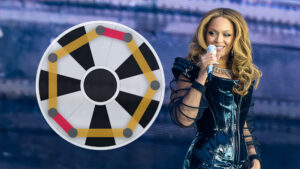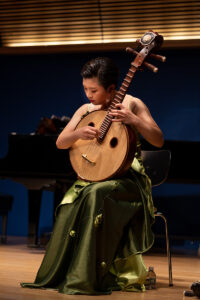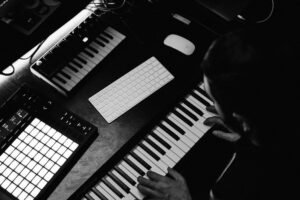This is a blog post adaptation of the following video:
This video is part of a series called Isn’t Music Theory, where I share some of my ideas about music and how we learn it. I’ve adapted and/or commented on the video for this post. If you’re interested, check out the whole series on the Midnight Oil Collective YouTube channel.
This is Part Two of my two-part series on vocal learning. In Part One we talked about how being a vocal learner means that we humans, along with other species that are vocal learners, learn songs from our parents. So I remembered a song that I learned from my dad called “Mairzy Dotes” and I wrote it down the way I remembered it.
In this part I’ll go back to the source of where I learned that song, which is my dad, and then he and I will go back to the source of where he learned it, which is old recordings. This is will show us exactly how that song changed by being passed down orally and aurally, which is exactly how all music learning works (except when notated music is involved).
Note: if you’re new to reading staff notation, I suggest you watch the video, where you can hear us sing everything.
In Vocal Learning: Part One, I sang how I remembered “Mairzy Dotes,” and it came out like this:
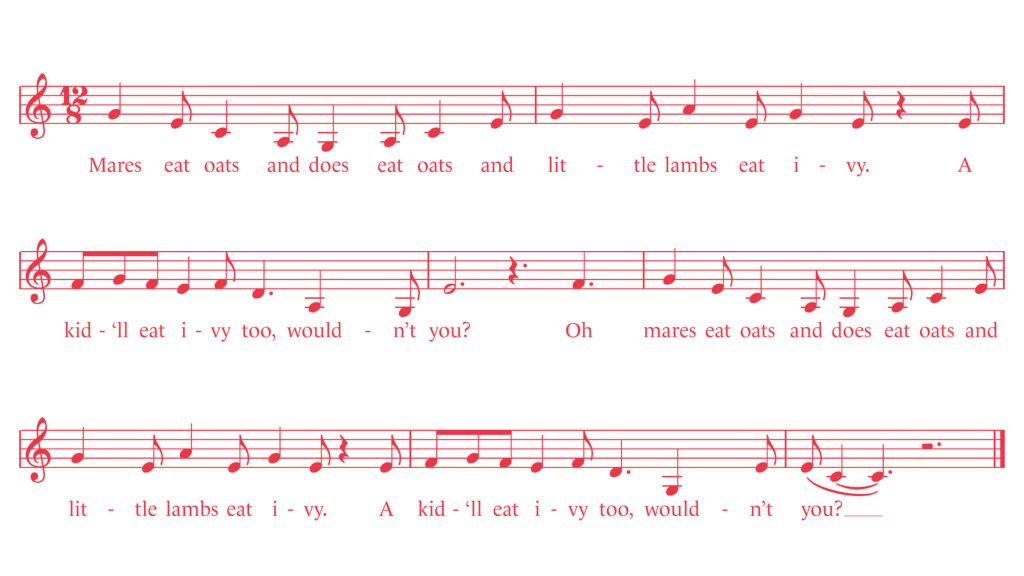
In this video I Skyped with my dad and asked him about the song. He couldn’t remember when he taught it to me, or how exactly he first heard it, but I got him to sing through the song, and it came out like this:
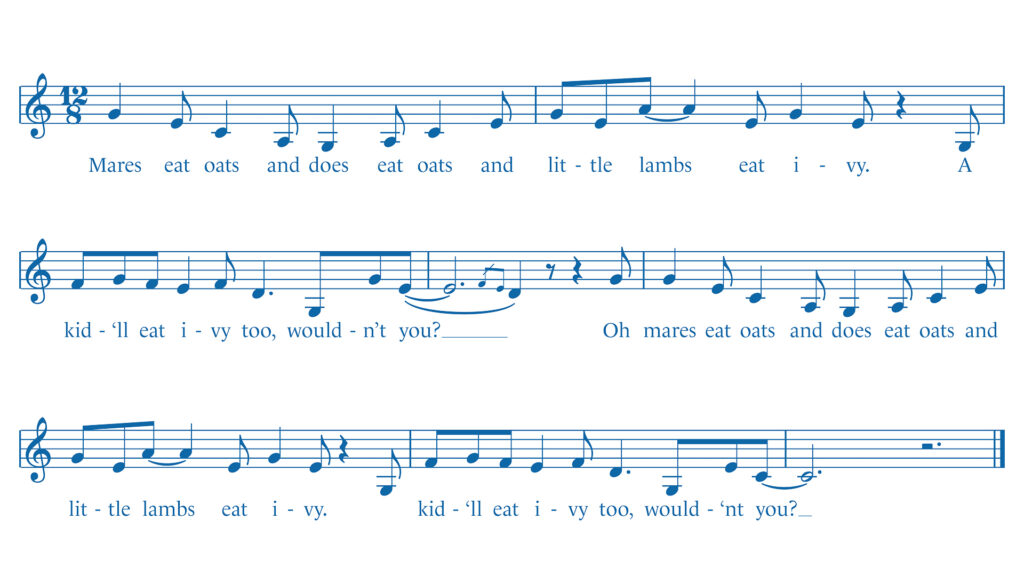
Then we listened together to the Andrews Sisters version from 1948, which was one of the old versions that used to be on the radio but, as I later discovered, not the earliest version (it was first made famous in 1944 by the Merry Macs, and before that was sung by Al Trace and his Silly Symphonists). We’ll come back to this later.
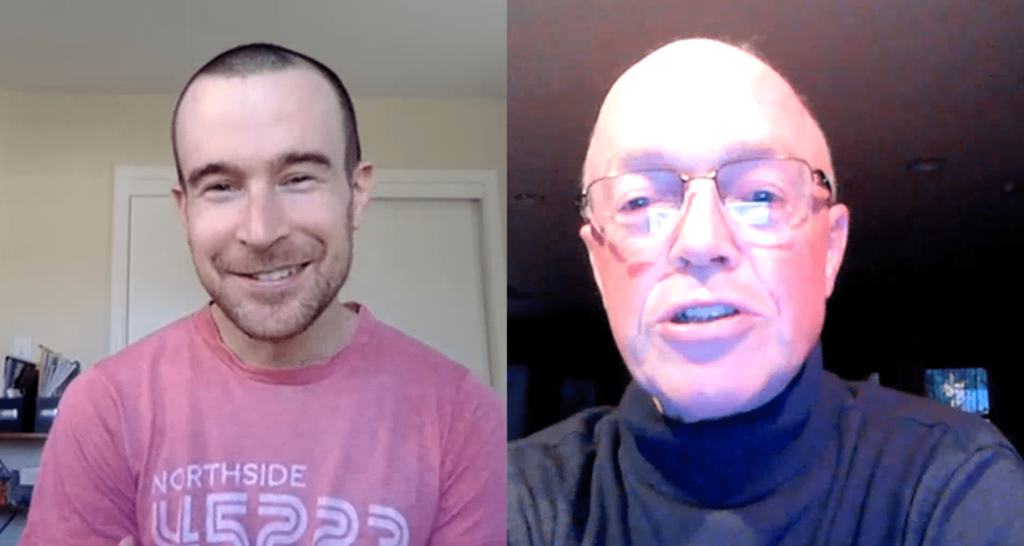
The next step in my little experiment was to write down the version from the recording and compare it to the one I wrote down earlier. To do this I needed to figure out what note it started on.
Fun fact about this: if I were saying this in a room with a bunch of songbirds, they would all be laughing at me because I have no idea what the first note is. This is because most vocal learning birds have something pretty close to what we call “perfect pitch,” and I do not. Yes, humans are better than a lot of other animals at hearing notes and remembering their relationships but forgetting the notes themselves, which we call “relative pitch.” Vocal-learning birds on the whole are much better at “absolute” or “perfect” pitch, although some humans who are not me are also quite good at that.
Maris Hoeschele, “Animal Pitch Perception: Melodies and Harmonies” in Comparative Cognition & Behavior Reviews, Vol. 12, 2017.
So the fact that I find these relationships between the notes and remember the relationships while forgetting the notes means that I’m abstracting from the sounds in order to fit them into my memory. In doing so I’m thinking in structures. Structures is kind of a broad term to mean just sort of things that I’m carrying around with me in my mind without really knowing it. For instance, the opening to “Mairzy Dotes” is sol-mi-do and notes in the exact same relationship start the “Star-Spangled Banner.” This structure is called a major triad.
These patterns can emerge when we look for them and they can teach us a lot about music, which can uncover some pretty interesting stuff about us.
So here’s the version I transcribed from the recording by the Andrews Sisters. Click or tap on the plus signs to learn more about different parts of the song:
Now here it is with my dad’s version. I’ve corrected for key since neither of us has perfect pitch. Slide the vertical bar to see the differences. What differences do you notice?
Now click or tap on the plus signs to learn more about these differences.
Okay now here’s my dad’s version with mine. Check out the differences between the two generations:
Now click or tap to see more:
Now here’s the crazy part: this is my version with the Andrew’s Sisters version. Somehow I got the rhythm almost the exact same with the exception of the “oh.”
This is where I need to finally mention the Merry Macs version. When I went back and listened to theirs, my dad’s version suddenly made sense. His was almost identical in pitch and rhythm. So I’m guessing the Merry Macs version is the one he grew up with. As for me and the Andrews Sisters, we must have just had the same intuitions, decades apart.
In music passed through the oral tradition, real old-fashioned folk music, this process of remembering and misremembering and transmitting happens over and over as one person sings a song to another who sings it to another. The song then spreads out in space as well as in time and it changes a little bit in both dimensions.
For a lot of music now, we actually have recordings to go back to. It’s another way of freezing these sounds to listen again later and it can be another way of passing it on to others to learn. Just like notation did, this ability opened up so many possibilities for music. Hip-hop, EDM, Reggaeton, so much music depends on recordings for its existence as well as its spread. Notation can serve as a communication and memory tool without being a barrier to learning.
My ability to hear stuff and write it down took many many years of work and I’m still working on it. When I learned the song “Mairzy Dotes,” I had no idea what the notes were, and I probably would have even had trouble finding them with the help of a piano. In college I started to improve my ear and I remember wondering at one point whether I would be able to go back and take a song I learned before having this skill and still figure out the relationships between the notes. This proves that even before I could figure out what these relationships were, I was coding them in my memory in a way that would help me to access them later and figure them out. This is despite the fact that I was pretty tone deaf as a kid. This wasn’t some kind of hidden superpower on my part. It was the structures that were hidden. Hidden in my memory and hidden in my voice.
